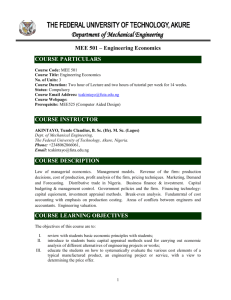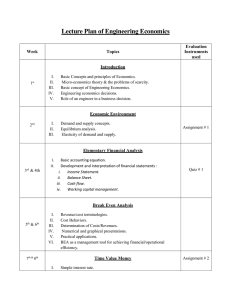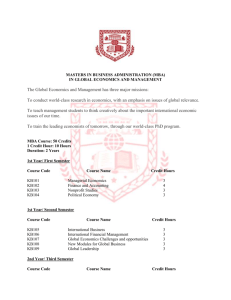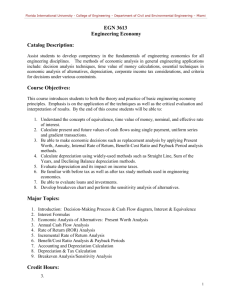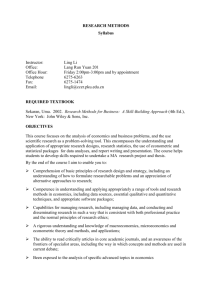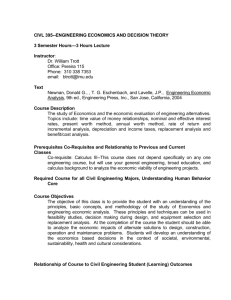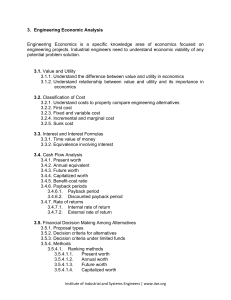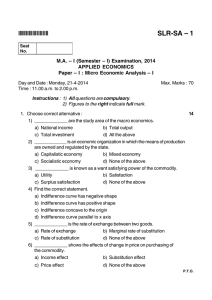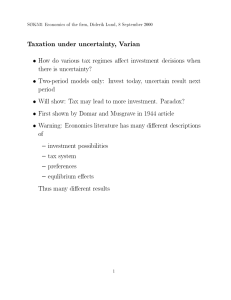Course code: MS 224 Course title: Engineering Economics
advertisement
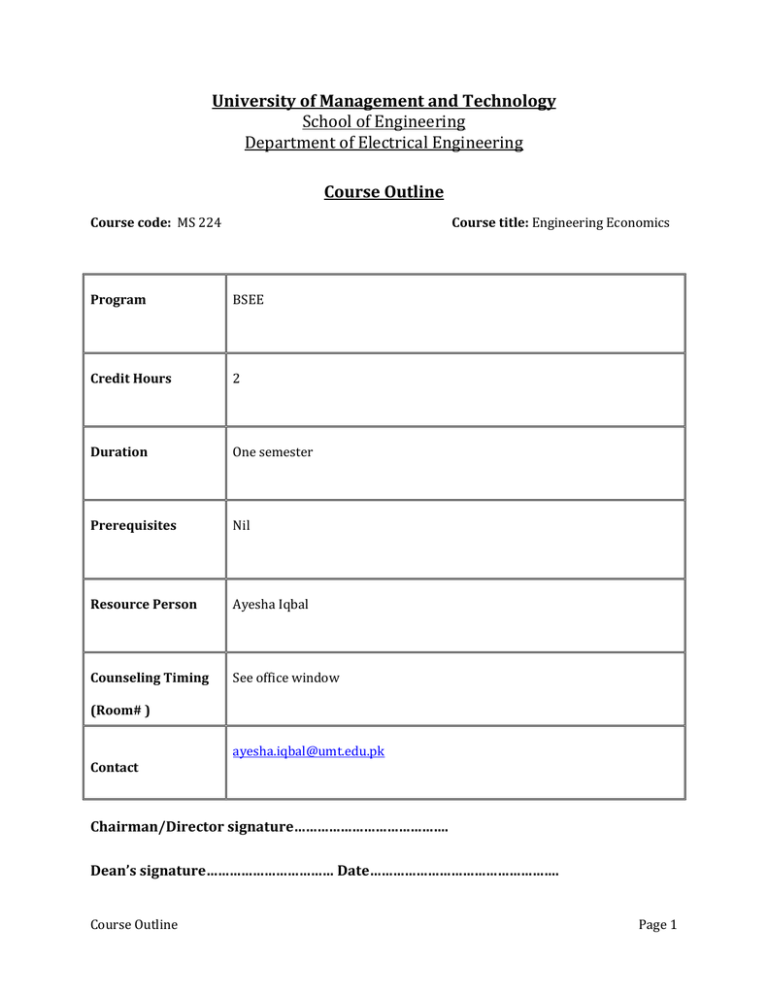
University of Management and Technology School of Engineering Department of Electrical Engineering Course Outline Course code: MS 224 Course title: Engineering Economics Program BSEE Credit Hours 2 Duration One semester Prerequisites Nil Resource Person Ayesha Iqbal Counseling Timing See office window (Room# ) Contact ayesha.iqbal@umt.edu.pk Chairman/Director signature…………………………………. Dean’s signature…………………………… Date…………………………………………. Course Outline Page 1 Learning Objectives: Upon completion of this course, students will: Have awareness about the economic and financial considerations involved in engineering projects. Have good understanding of Time Value of Money. Have working knowledge of basic economic analysis like Present worth, Annual worth, Cost-Benefit, Rate of return, payback period etc. Have familiarity with return concept on any particular investment like IRR, ERR etc. How engineering projects are initiated, planned, executed, controlled and completed. The course strongly supports expected outcomes b, c, g and k of the HEC Electrical Engineering Curriculum. Learning Methodology: Lecture, interactive, participative Grade Evaluation Criteria Following is the criteria for the distribution of marks to evaluate final grade in a semester. Marks Evaluation Marks in percentage Quizzes 15 Assignments 5 Mid Term 30 Attendance & Class Participation Term Project Presentations Final exam 50 Total 100 Course Outline Page 2 Recommended Text Book: Engineering Economics Analysis 9th Edition by Donald Newnan, Ted Eschenbach, Jerome Lavelle, Oxford University Press, 2004. Calendar of Course contents to be covered during semester Course code: MS 224 Lecture Course title: Engineering Economics Course Contents Reference Chapter(s) 1-2 Concept of Engineering Economy Role of Engineering Economic Analysis Decision Making Process 3-4 Basic Principles of Economics Micro and Macro Economic Theory Problems of Scarcity Lecture Slides 5-6 Economic Environment: Consumer and Producer Goods Goods and Services Demand and Supply Concept, Equilibrium Elasticity of Demand, Elasticity of Supply Lecture Slides 7-8 Engineering Costs Cost Estimation Benefit Estimation Cash Flow Diagram Chapter 2 9-10 Computing Cash Flows Time Value of Money Simple Interest Compound Interest Chapter 3 11-12 Repaying a Debt Equivalence Single Payment Compound Interest Formulas Chapter 3 13-14 Uniform Series Compound Interest Formulas Relationships between Compound Interest Factors Single Payment, Uniform Series, Arithmetic and Geometric Gradient, Nominal and Effective Interest Continuous Compounding Chapter 4 Course Outline Chapter 1 Page 3 15-16 17-18 19-20 Mid Term Examination PRESENT WORTH ANALYSIS Applying Present Worth Techniques Useful Lives Equal the Analysis Period Useful Lives Different from Analysis Period Capitalized Costs ANNUAL WORTH ANALYSIS Annual Cash Flow Calculations and Analysis Analysis Period Analysis Period equal to Alternative Lives and a Common Multiple of Alternative Lives Chapter 5 Chapter 6 21-22 RATE OF RETURN ANALYSIS Internal Rate of Return Calculating Rate of Return Rate of Return Analysis Chapter 7 23-24 Future Worth Analysis Benefit-Cost Ratio Analysis Payback Period Sensitivity and Breakeven Analysis Chapter 9 25-26 Basic Aspects of Depreciation Historical Depreciation Methods Straight-line Depreciation and Declining Balance Depreciation Chapter 11 27-28 Selection of a Minimum Attractive Rate of Return Sources of Capital Cost of Funds Chapter 15 29-30 Investment Opportunities Selecting a Minimum Attractive Rate of Return Adjusting MARR to Account for Risk and Uncertainty Chapter 15 31-32 Course Outline Final Examination Page 4
